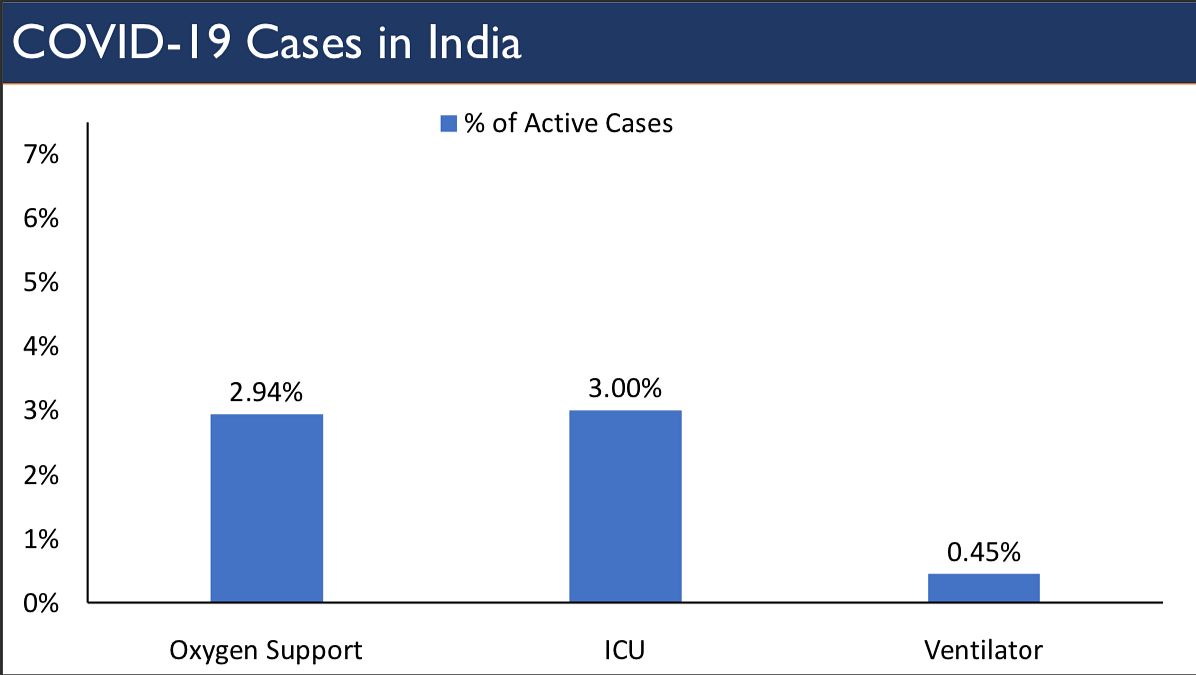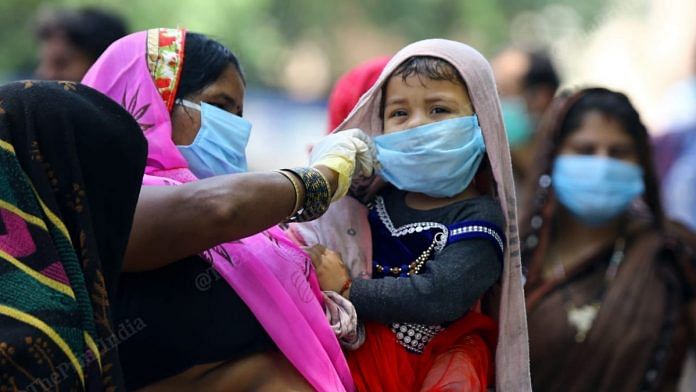In the final hours of lockdown 3.0, the Ministry of Health and Family Welfare issued guidelines on changes in restrictions as states geared up to re-open. In lockdown 4.0, the letter from the Home Ministry said, the states and union territories would have the authority to designate red, orange and green zones in districts.
It listed six parameters; if a district or city could meet the “desirable” threshold values, the state government could consider opening it up. But there is one problem — only a handful of cities and districts are currently publishing anywhere near the kind of data that the Home Ministry wants states to use and consider.
This same story has repeated itself in different versions and forms throughout India’s Covid-19 response, and it is leaving us without the most basic information to make decisions. Here are five important areas in which we lack critical data.
Also read: How patients in Mumbai are losing crucial hours running between hospitals for ICU beds
-
Testing
“A total of 26,15,920 samples have been tested as on 21 May 2020, 9 AM IST. Number of samples tested in 24 hours 1,03,532.” That is all the Indian Council for Medical Research (ICMR)’s daily 9 am update says about the crucial issue of testing, on Thursday morning, as it has for the last several weeks now.
It doesn’t say how many samples were found to be positive and negative, how many were fresh tests, and how many were tests conducted on an already positive person. It doesn’t give state-wise data on the tests conducted, or how many of those tested were symptomatic or how many were contacts of someone who had previously tested positive. As long as we do not know if the population being tested is representative of the country, or is representative of high-risk groups, we will not know if we are testing in the right direction.
In its 17 May letter to the chief secretaries of all states and union territories, the MHA suggested that the testing ratio and sample positivity rate of each district or city be considered while categorising them as red, orange or green. As of now, not all states release daily testing data in a systematic manner, let alone all districts.
Also read: Census migration data released on time could have helped policymakers during migrant crisis
- Clinical management
We know next to nothing about the clinical management of India’s Covid-19 patients apart from the number of those who test positive, the number who later test negative, and the number of people who die. We do not know how long patients stay in hospital or a care facility and what clinical management is being followed for them.
On Wednesday, joint secretary (health), Lav Agarwal released a chart on critical care treatments, but we know nothing about the differences between states or private/public hospitals, and about the outcomes of these procedures.

- Patient demographics
We also know next to nothing about the demographics of India’s Covid-19 patients, except their age and gender break-up when it is periodically released by Agarwal. One media report, for instance, has said that of the total Covid-related deaths reported in Maharashtra until 3 May, more than 40 per cent were from the Muslim community.
Knowing if poorer people or those from marginalised communities are over-represented among patients or the dead would be vital to understanding the nature of the pandemic in India. In the US, for instance, African-Americans are over-represented, and in the UK too, it is people of colour.
Also read: Experts are leading Covid fight globally. But not in India, the bureaucrats won’t allow it
- SARI
The ICMR runs a network of over 100 labs under the Virus Research And Diagnostic Laboratory Networks (VRDLN), which, among other diseases, systematically tests for Severe Acute Respiratory Illness (SARI). The first piece of research that came out about SARS-CoV2 in India emerged from this network; scientists at the ICMR tested SARI patients admitted at 41 sentinel sites through the VRDLN from 15 February 2020 onwards for Covid-19 and found some early suggestions of community transmission.
But that’s all we know about SARI, even though it is clear that the ICMR is monitoring SARI cases. If this data were to be made public, as Brazil does, Indian scientists could understand if there were early indications of the virus’ presence (as Brazil found), or if we are still missing current cases.
Also read: Indian health data will miss recording many Covid and lockdown deaths
- Deaths from the SRS
Most countries are looking at ways to collect “excess mortality data” — statistics on deaths from all causes in recent periods — to check if some Covid-19 deaths have been missed. The UK’s Office for National Statistics, for instance, estimated 49,353 excess deaths in England and Wales between 13 March and 8 May, and 37,925 of these were Covid-related. The government’s figure for the same period, on the other hand, was 34,796 for the whole of the UK.
India’s Sample Registration System, under the Registrar General of India, maintains records of births and deaths from sample sites. Additionally, better-run cities such as Mumbai have accurate weekly data about all deaths registered in the city. India needs to urgently release this data to accurately estimate whether the death rate is elevated and some further deaths could be attributable to Covid-19.
The author is a Chennai-based data journalist. Views are personal.




when data does not support ur self created image or is embarrassing avoid or embroider it or fudge it or mask it
Whether available or not, LIBRANDUS have tools to create fake data. So Rukmini’s worry doesn’t add any value to Modi haters.